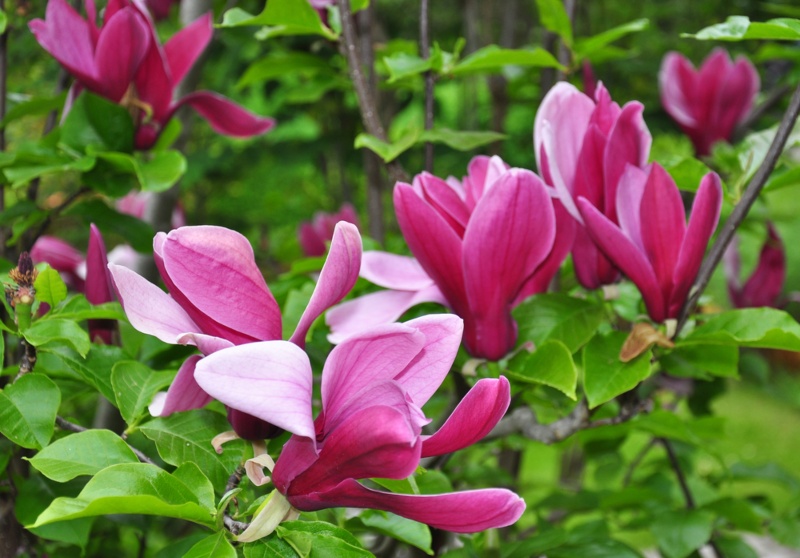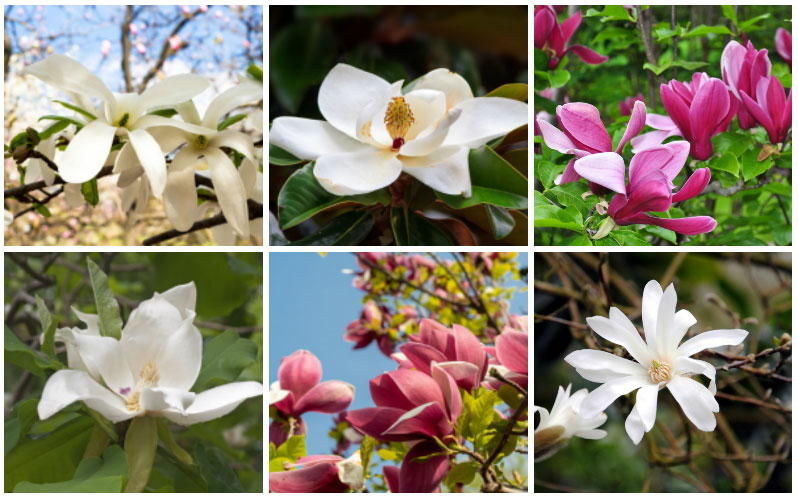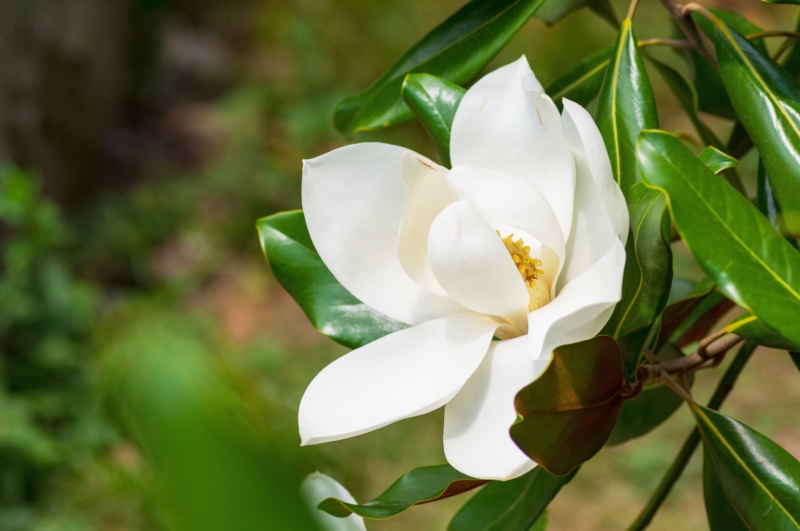
With over 16 species of magnolia trees (Magnolia spp.) there is some variation in the size and appearance of the tree. While some magnolia trees are evergreen, others are semi-evergreen or deciduous.
The popular Southern Magnolia (Magnolia grandiflora) is hardy only in zones 7 through 10, but others are hardy to zone 5.
Choosing the right magnolia tree for your region is important. Otherwise, with routine care and some attention to the nutrient needs of your tree is all that is needed to keep your magnolia tree healthy.
The amount and timing of fertilizing your magnolia tree depends on the condition of your soil and the growth stage of your tree.
Should you fertilize a magnolia tree at planting time?
Yes, but fertilizing the soil is only part of the process. Preparing the soil well for your magnolia tree seedling is important because it requires the correct pH in order for your magnolia tree to uptake the nutrients it needs. Here’s how to get it off to a good start.
- Begin by selecting a location for your magnolia tree in full sun to partial shade where the soil remains moist, but not soggy. Even though magnolia trees like moist soil, soil that drains too slowly or remains soggy after rains spells trouble for the roots.
- Test the pH of the soil. Magnolia trees prefer acidic soil with a pH between 5.0 and 6.0 and will suffer if the pH is higher than 6.0 as they are unable to take up the nutrients they need to thrive in alkaline soil.
- Adjust the pH of the soil to the proper pH. You can do this by adding soil amendments to the existing soil. For soil that is too alkaline (pH above 6.0) adding sphagnum peat moss can do the trick. Canadian peat moss has a pH of 3.0 to 4.5, explains the Iowa State University Extension, and is an easy way to lower the pH of your soil. To raise the pH of your soil, add limestone to the existing soil. Follow the application rate on the container for best results.
- Add 2 pounds of 10-10-10 (or similar formula) of granular fertilizer per 100 sq. feet of planting soil.
- Mix the chosen soil amendments and compost or well-rotted manure to the removed soil. You should use approximately one part compost or manure to one part of the existing soil.
- Plant the seedling in the hole and back-fill around the roots with the amended soil.
- Do not fertilize your magnolia tree during the first year of growth
Do you need to fertilize magnolia trees in the fall or the spring?
Magnolia trees benefit from yearly fertilizer. It can be applied either in the fall after the leaves have dropped or in the spring before new buds form.
But, because magnolia trees have sensitive roots that are near the surface of the soil this must be done carefully.
There are two basic methods.
1. Apply fertilizer to the surface of the soil.
Sprinkle a balanced fertilizer like 10-10-10 over the soil under the canopy of the tree and water it in with the mist attachment on your hose. Do not spray aggressively as this may cause the fertilizer to run off.
2. Apply fertilizer via drilled or dug holes.
- Dig 6-inch holes in the soil around the perimeter of the tree under the drip line. You will need 3 to 6 holes evenly-spaced around the tree, depending on the size of the tree.
- Fill the holes half filled with granular fertilizer. You will need a total of 2 pounds of fertilizer for each inch of trunk diameter of the tree. Divide this evenly between the holes.
- Top the holes off with soil and tamp it down firmly.
Under normal conditions your magnolia tree should thrive with an application of fertilizer once a year. If you observe leaves getting smaller every year or new growth of less than 5 inches each year, your magnolia tree may need additional fertilizer to boost its growth. You can either give it an additional application via the above methods, supplement with tree spikes designed for acid-loving trees or use a water-soluble fertilizer during the summer.






